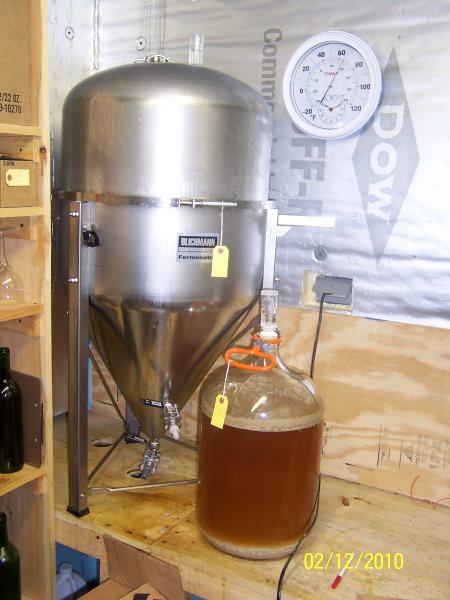Cuzco_Brew
Well-Known Member
Orginaly posted over in the Equipment thread, but figured I'd post it here as well.
I have the opportunity to design a nano brewery (150L/40Gal) for a restaurant. The idea being to brew and sell on premises. Ive done the math and figure a 150L/40 gallon setup will suit the requirements. I am a home brewer at heart so I am approaching this as giant home brew setup. The plan is to build a single tier system using 2 pumps and 2 gas burners for heating (HLT + Kettle), and a gaint imerssion chiller to cool.
I live in Peru so buying an off the shelf system or 3 Blichmann pots and a couple of conical fermenters isnt an option. The upside of living down here is that getting stuff fabricated is much cheaper. So the plan is to have following fabricated in stainless steel:
HLT 200L / 50 Gallon
Mash Tun 200L / 50 Gallon
Boil Kettle 250L / 66 Gallon
Fermenters 180L / 47 Gallon
Now as I am going to have the HLT/Mash Tun/Kettle/Fermenters fabricated I have a few design questions:
Cheers
Zac
I have the opportunity to design a nano brewery (150L/40Gal) for a restaurant. The idea being to brew and sell on premises. Ive done the math and figure a 150L/40 gallon setup will suit the requirements. I am a home brewer at heart so I am approaching this as giant home brew setup. The plan is to build a single tier system using 2 pumps and 2 gas burners for heating (HLT + Kettle), and a gaint imerssion chiller to cool.
I live in Peru so buying an off the shelf system or 3 Blichmann pots and a couple of conical fermenters isnt an option. The upside of living down here is that getting stuff fabricated is much cheaper. So the plan is to have following fabricated in stainless steel:
HLT 200L / 50 Gallon
Mash Tun 200L / 50 Gallon
Boil Kettle 250L / 66 Gallon
Fermenters 180L / 47 Gallon
Now as I am going to have the HLT/Mash Tun/Kettle/Fermenters fabricated I have a few design questions:
- Is my sizing of the HLT/Mash Tun/Kettle right for a 150L/40Gal system?
- Is there an optimum design for a kettle/HLT? Height vs width?
- I was thinking a square mash with a bottom drain. Is there an advantage to a round mash tun over a square one? Or vice versa?
- What are the best dimensions to use for the mash tun? Height vs width/breadth? Optimum depth of grain bed?
- Fermenters. Is 180L/47 Gallon big enough to ferment a 150L/40 Gallon batch? Is it too big?
- Whats the best height/width combination for a conical fermenter? Ive read that taller fermenters can create pressure that can affect fermentation, is that even a factor on such a small setup?
- What angle do you need to have on the cone to ensure the yeast and trub settle out?
Cheers
Zac



















![Craft A Brew - Safale S-04 Dry Yeast - Fermentis - English Ale Dry Yeast - For English and American Ales and Hard Apple Ciders - Ingredients for Home Brewing - Beer Making Supplies - [1 Pack]](https://m.media-amazon.com/images/I/41fVGNh6JfL._SL500_.jpg)










































